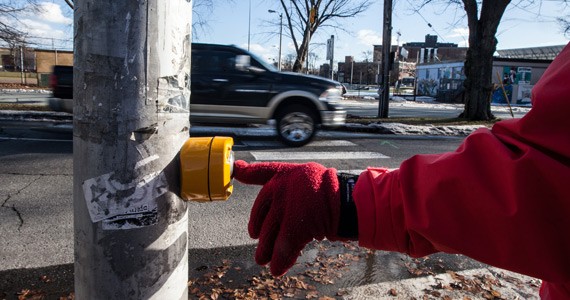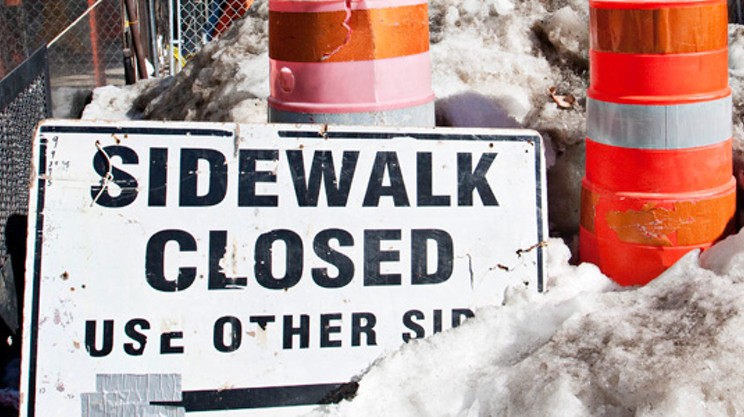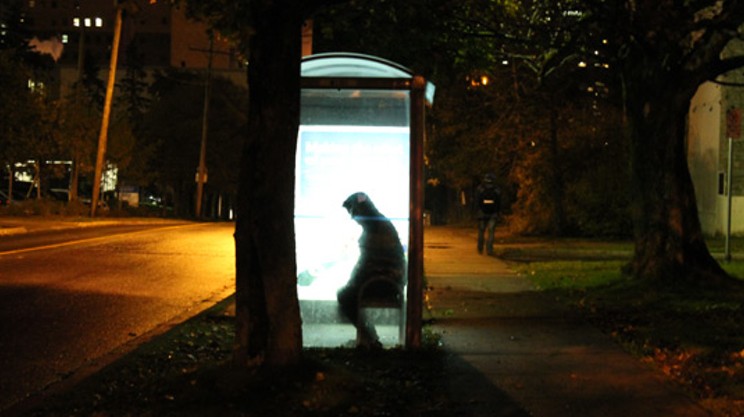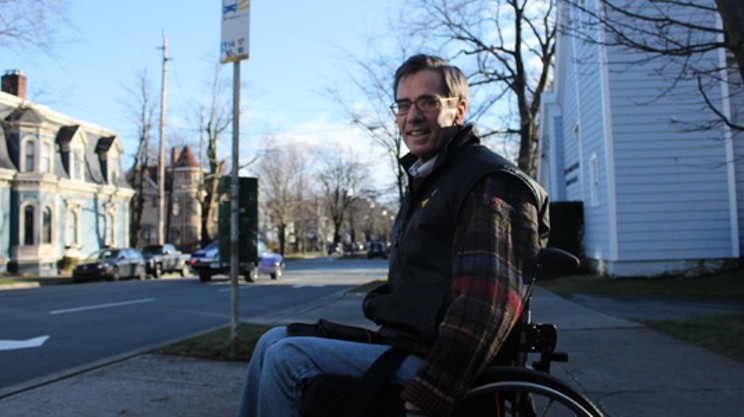About six months after he was elected to Halifax council, the city upgraded a major intersection at University Avenue and Robie Street in Waye Mason’s district. It was, according to Mason, “a beautiful piece of engineering which solved a bunch of problems.” But the reaction on the street was not so pretty. “People flipped out.”
Among the changes was the addition of a push-button activated walk signal; the kind that won’t give pedestrians the go-ahead unless pressed, even if traffic in the same direction gets a green light.
Up until July, the city had been slowly installing push-button activation at intersections all over the peninsula, and in the process driving pedestrians crazy. Or at least driving plenty of them to cross against the signal.
“Any normal human being just walks across anyway,” says Mason. “If you get there, and it’s just turned green and there’s still the red hands, you ignore it.”
Lukas Pearse agrees. Like many a Haligonian, Pearse uses a combination of walking and driving to get around. Does he cross against red lights? Almost never. Does he cross against a red hand when traffic in the same direction has a green? Almost always.
“The seemingly arbitrary, unfair nature of the way the lights work breeds a kind of contempt for them,” says Pearse. “Because people feel they’re unfair, they just say ‘screw that.’”
“This is not a new thing,” says HRM’s traffic authority Taso Koutroulakis. “In HRM in general, especially Dartmouth, Bedford, Sackville, push buttons have been in place for 25 years at least.”
And there is a reason for the button-activated system, he explains. A green light for a car can last for a shorter period than a green light for a pedestrian. So by excluding the pedestrians from every cycle, the lights cycle through more quickly, and therefore there’s less waiting for everyone. At least that’s the theory.
“I think clearly the city is putting drivers ahead of pedestrians and it makes me crazy,” says Pearse. “Even as a driver I notice this. I always think, if you’re driving you’re probably going to get there sooner, so why shouldn’t you wait a little bit?”
Button-activation was introduced to peninsular Halifax in conjunction with accessible pedestrian signals–buttons that trigger the audible chirps and cuckoos that make crossing the street possible for visually impaired pedestrians. Those are still working, but Koutroulakis says the city has turned off most button-activation on the peninsula from 7am to 7pm.
“I’m glad to say the city appears to be reducing their role,” says Mason. But the Halifax councillor would like to see the signals off 24/7, at least in most intersections. “Why wouldn’t you make it so the walk signal comes up automatically at 2am?”
Mason would also like to see the button-activations turned off in downtown Dartmouth, where major intersections like Wyse and Nantucket (at the Macdonald Bridge) still require pedestrians to press a button and wait, even during a green traffic signal.
“The standard for sidewalks, crosswalks and intersections in the pedestrian realm should be the same in Dartmouth as it is in Halifax,” says Mason.
“The stats show that walking to work is way lower in downtown Dartmouth than you’d expect,” he says. “Part of that to me says, maybe people don’t walk in Dartmouth because they’ve had their sidewalks plowed by crappy Bobcats for the last 20 years and because all of the intersections are designed for cars instead of people.”























